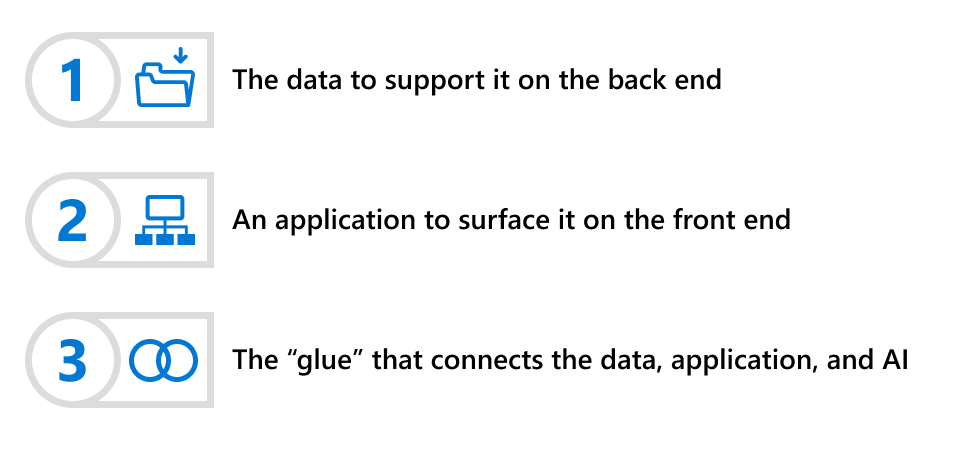Insight’s first priority was to make sure the retailer’s existing architecture could support the work they planned to do for their call center. According to Insight’s National AI Practice Lead, Meagan Gentry, there are three core layers that set the foundation for an AI solution:
In this case, it turned out that Azure OpenAI was the glue they needed to deploy an interactive voice assistant (IVA) powered by generative AI. With an IVA, callers would be able to instantly get the answers they needed, bypassing the tedious process of selecting a menu option, being put on hold, and waiting to get transferred to the call center or the right store.
Fortunately, Azure was already part of the retailer’s architecture, which made it that much easier to work with their existing data. “There were a lot of different data sets needed to do inventory checks and account lookups,” Gentry said. “The PostgreSQL and Azure SQL databases [the retailer] already had integrated really well with the Azure OpenAI search connectors, so we could just reach in and grab that data.”
The retailer was also already using Azure Communication Services to handle call volume traffic, so they could seamlessly implement Azure AI Services and features like speech-to-text and text-to-speech. “The good news is that all these [products] play nicely together, and that's what makes Azure a lean-to platform for solutions like this. [Azure’s] integration methodology is documented, it’s out there for us to learn, and it’s very low lift,” said Gentry.
From there, Insight tested different paths for the call center’s prompt and response behavior—which involved thinking through questions like, “Is this potential question getting routed to the right place? Is [the response] correct, helpful, and leading to resolution?” They made sure each prompt got to the right place with Azure OpenAI, and with the help of a retrieval augmented generation (RAG) framework, they could further customize the responses based on the retailer’s unique data sets—securely.
“Azure AI is constantly responding to market changes in a safe way,” Gentry said, “and that creates confidence with our customers that when they’re using Azure, they’re going to have a menu of options for AI at their fingertips that meets their needs but is also well-vetted.”